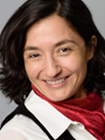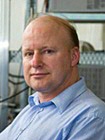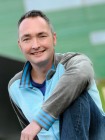ERC Advanced Grants for three UG researchers
The European Research Council has awarded three ERC Advanced Grants to three UG researchers. Prof. Maria Antonietta Loi, Prof. Bart van Wees and Prof. Siewert-Jan Marrink can use this money to set up long-term and ground-breaking research projects.
The European Research Council (ERC) awards grants to excellent researchers to stimulate groundbreaking research in Europe. The Advanced Grants are meant for established academics with a track-record of significant research achievements. Advanced Grants may be awarded up to €2,5 million for a period of 5 years.

Maria Antonietta Loi
Maria Antonietta Loi creates materials with specific structures on the nanometer scale (a nanometer is a millionth of a millimeter). The nanostructure determines the properties of the material, and Loi’s work is aimed first to understand how this happens, and then to create specific nanostructures for desired applications.
Her work is in opto-electronics, the interaction of materials with light. She has worked on new types of solar cells, based on perovskites, which are materials that have a very specific crystal structure, or on quantum dots, which are clusters of around 1,000 atoms that behave like one giant super-atom. These materials can receive light and act as solar cells or sensors, or emit light and be used as light emitting diodes (led’s).
In her ERC work she will create metamaterials (i.e. designed materials that do not occur in nature) that can be tuned to receive or emit light at specific wavelengths for different applications. Loi will combine quantum dots and quantum wells based on perovskites. The final objective is to produce new infrared photodetectors and visible light emitting diodes of superior performance levels.
See also:
- Making solar cells can be like buttering bread
- Extra sulphur improves electronic structure of quantum dots
- Hybrid perovskites promise cheaper solar panels, better X-ray detectors

Bart van Wees
Bart van Wees builds and studies nanodevices, electronic circuits with a core that consists of different layers of material, each just one atom thick. At this scale, the laws of quantum mechanics dominate. Van Wees works in a field called spintronics, which uses a quantum mechanical property of electrons, their ‘spin’. This can be best imagined by picturing electrons as small spheres spinning around their own axis. As spin is magnetic property, the spinning electrons are sensitive to magnetic fields.
This spin can assume two values: ‘up’ or ‘down’, which makes it suitable, in principle, for storing or transporting information. Van Wees creates 2D devices, often based on graphene (a form of carbon), to transport and manipulate spins. This already resulted in a ‘spin transistor’.
In his ERC project, Van Wees will work on so-called magnons. A magnon is a spin wave in non-conductive magnetic material. This is a disruption in the magnetization which spreads like a ‘wave’ in a full stadium: electrons in the material pass the spin on to their neighbours before falling back into their original position. With this form of transport only the spin moves, and the electrons do not travel around. This means heat does not develop and the transport requires very little energy.
The ERC project will open a regime that has not been explored before. Van Wees will study interactions between spins, magnons and phonons (a particle-like elastic excitation, also a quantum phenomenon) in 2D systems. Ultimately, this will provide new strategies for low power information technology including heat management.
See also:
- All-electronic two-dimensional spin transistors
- Spinoza Prize
- Video Sensu

Siewert-Jan Marrink
The University of Groningen has a long history in computer simulations of molecules and atoms. The Gromacs simulation software which was created here is one of the leading packages for molecular dynamics research. Siewert-Jan Marrink inherited this and has developed a dedicated and widely used force field, the Martini model, to achieve a significant speedup of the simulations (see Another Martini for better simulations)
These simulations have to span different scales, from atoms to molecules to larger structures. The Martini model is especially designed to simulate lipid membranes, like those that surround living cells. Simulations can show processes that are not visible in experiments, such as the interactions between molecules in a cell membrane. This is called ‘computational microscopy’. The ultimate goal of Marrink is to simulate a cell organelle and even an entire cell.
In his ERC project, Marrink aims to set a large step towards this goal. This will require challenging methodological innovations at the crossroads of biology, physics, and chemistry. To simulate a realistic biological structure, the Martini model must be able to handle interactions between a large variety of biomolecules. The computational microscope must be able to zoom in on details and zoom out to ‘see’ the entire object, which requires simulations at very different scales. Marrink is confident that he will pull this off. One of the aims stated in his ERC project is to simulate − for the first time − a complete cell at molecular resolution: the JCVI- syn3A minimal cell derived from mycobacteria.
See also:
- The ultimate microscope: a computer
More news
-
19 December 2025
Mariano Méndez receives Argentine RAÍCES award
-
18 December 2025
Why innovate, and for whom?
-
17 December 2025
Ben Feringa wins Feynman Prize
